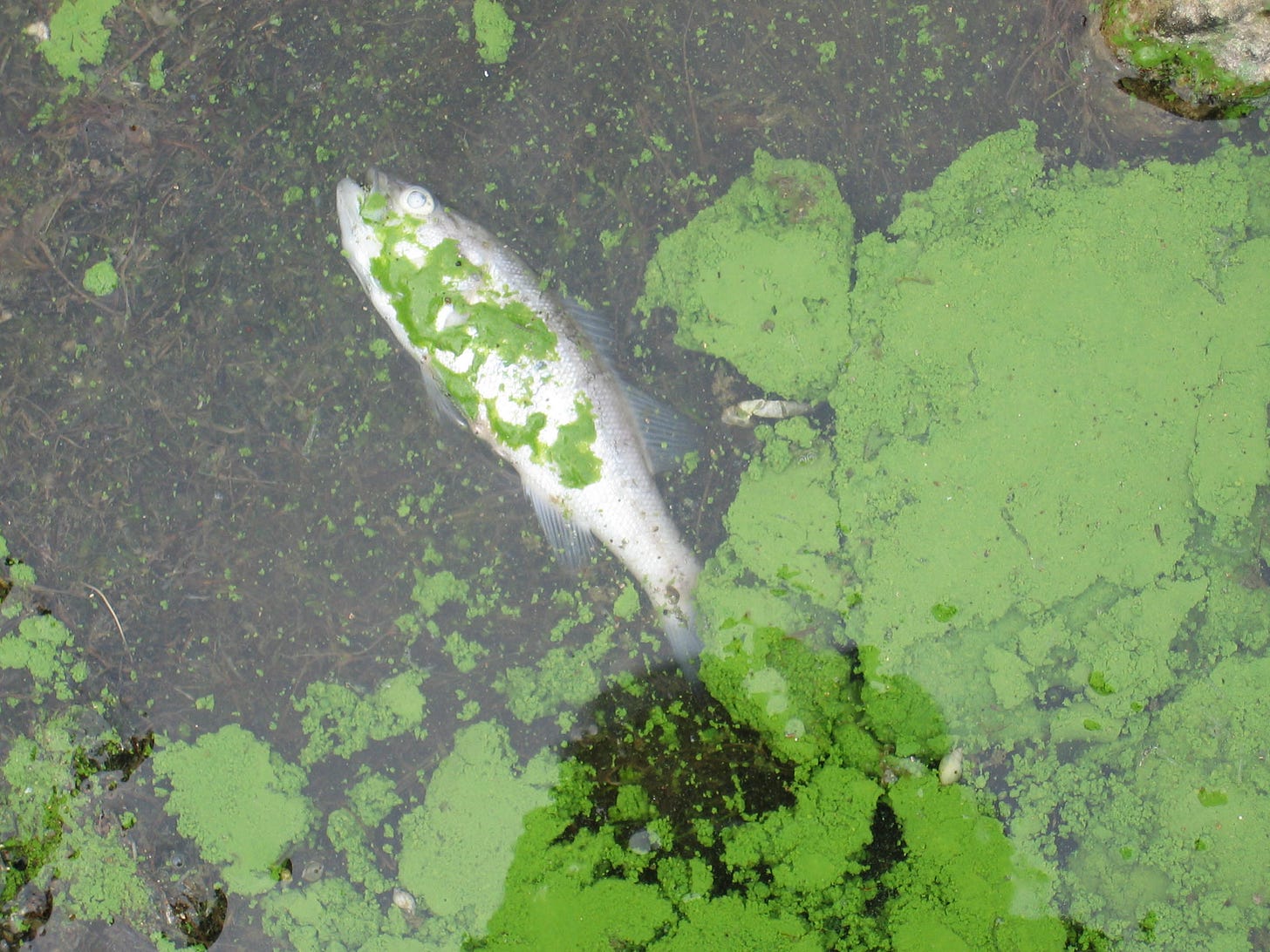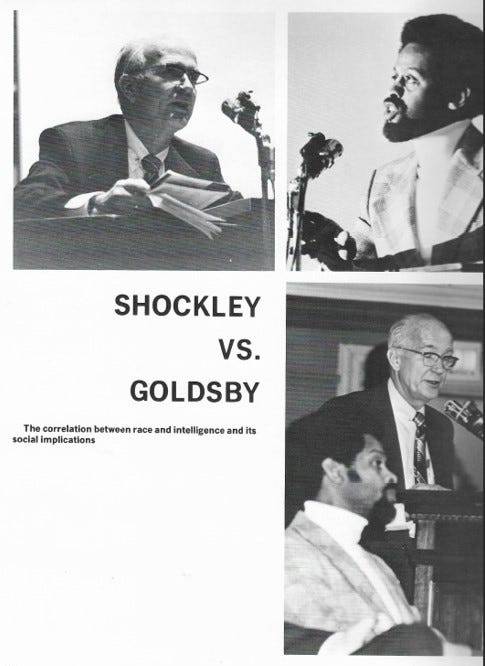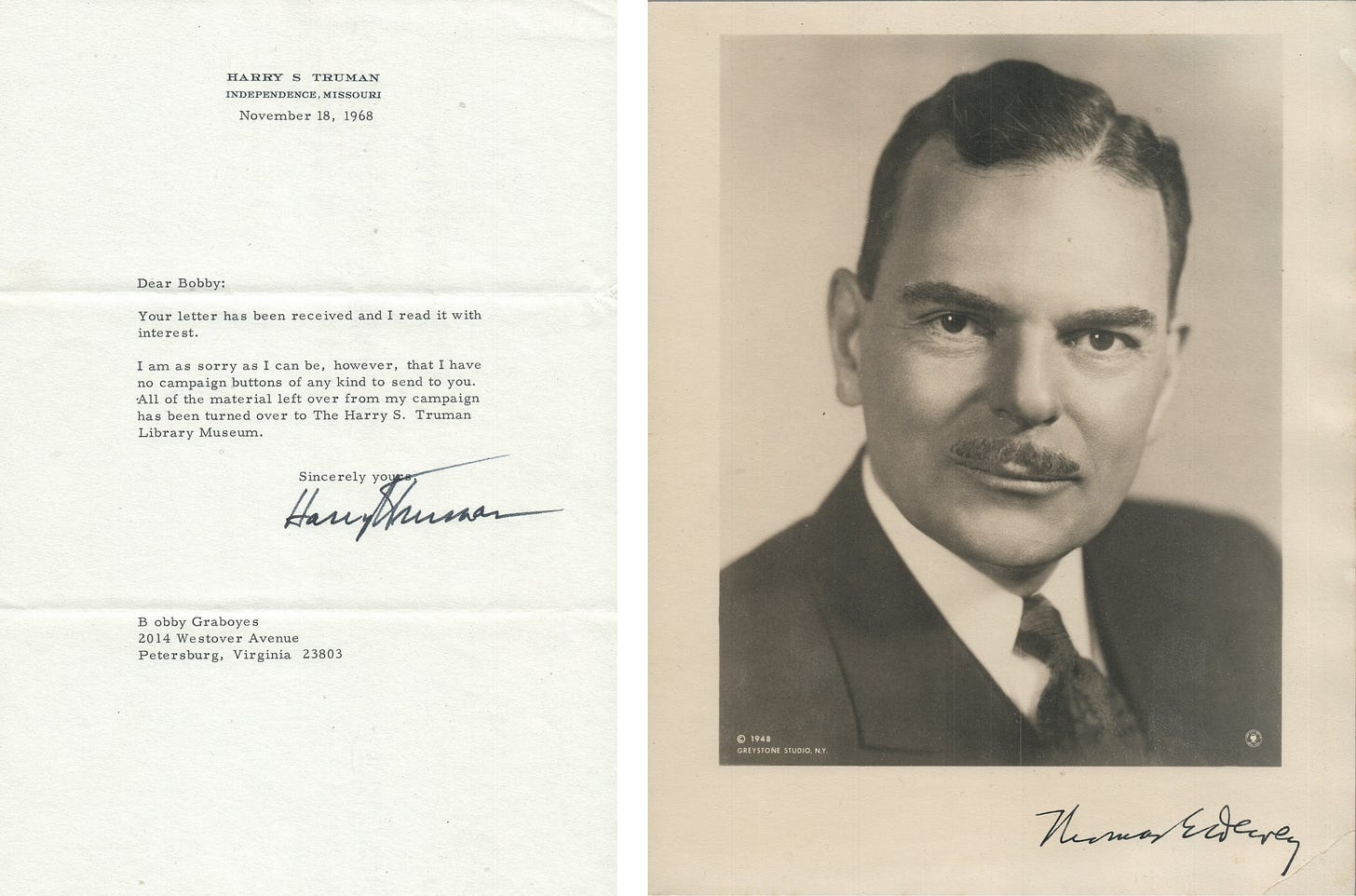Don’t Cut the Rattle off the Rattlesnake
Limits on Free Speech Are More Dangerous for You than They Are for the Snakes
Bastiat’s Window is a journal of economics, science, and culture. If you’re not already a subscriber, please sign up. Free subscriptions are deeply appreciated, but paid subscriptions really help! Please share the site and its articles with friends.
ON THE VIRTUES OF RATTLESNAKES
The spirit of free speech is crystallized in a quote that is often mistakenly attributed to Voltaire, but which certainly reflects his philosophy:
“I disapprove of what you say, but I will defend to the death your right to say it.”
What is often misunderstood by friends and foes of free speech alike is that this sentiment is not primarily a gift to purveyors of hate and misinformation—a generous sacrifice by those of nobler intent. Rather, free speech is primarily a defense against malevolent people, their malign sentiments, and their malicious impulses. Disagreeable, erroneous, and hateful public opinions serve as an early warning system and, at times, an instrument of self-destruction for the malignant.
Safe spaces and speech codes on American campuses (and elsewhere) don’t reduce the prevalence or virulence of malicious sentiments. They merely drive the purveyors into the tall grasses, where they slither about in silence—like rattlesnakes whose rattles have been amputated by those too precious to tolerate the sound.
In 1975, William Shockley, Nobel physicist-turned-white supremacist crackpot, was invited to the University of Virginia (UVa) to debate Richard Goldsby, an African American biologist, on “The Correlation between Race and Intelligence and Its Social Implications.” Some argued fiercely then (and argue still today) that the university should never have offered him a platform from which to disseminate his ignorant bile. My 2022 Bastiat’s Window essay, “Shockley versus Shockley,” explored why the university was wise to allow Shockley to speak and why those who attended the event (including me) were wise to to sit quietly and let him speak. As I wrote:
“I believed—correctly—that nothing would destroy him and his message more effectively in the eyes of my fellow students than simply allowing him to speak. I attended the event and got precisely what I hoped for. If Shockley had worn a clown suit and sprayed attendees with a seltzer bottle, he would not have damaged his credibility any more than he did simply by standing at the podium and sharing his thoughts. Someone asked me afterward why the university shouldn’t ban scoundrels like Shockley from its podiums. My response was simple: ‘Don’t cut the rattle off the rattlesnake. The silence is more dangerous for you than it is for the snake.’”
DEPLATFORMING AS SLIPPERY SLOPE
Unfetttered free speech is also a defense against self-righteous prigs, well-meaning busybodies, and self-serving ideologues who would injudiciously expand the definitions of “hate” and “misinformation” to silence those whose views they merely dislike. Substack (the platform on which this newsletter is delivered) has experienced such a controversy since November, when The Atlantic published “Substack Has a Nazi Problem: The newsletter platform’s lax content moderation creates an opening for white nationalists eager to get their message out.” A handful of little-read Substack newsletters, it seems, have been published by Nazi sympathizers, white supremacists, and Great Replacement Theory conspiracy-mongers. Substack originally declined to delete these pages but now has apparently buckled under pressure to do so. While I haven’t seen the pages in question, my gut reaction is that expelling these writers is a mistake for the following three reasons:
It’s beneficial to know what these kinds of people are thinking and how broad their reach is. Substack said that altogether, the deleted newsletters had fewer than 100 active readers. Observers noted that they had elicited very few likes or comments.
Expelling Nazis/neo-Nazis/Nazi sympathizers invites censorious activists to expand their definitions of “Nazi” and pressure Substack to ban their writings as well. Shortly before the 1948 Truman-Dewey election, a New York Times multi-tiered headline declared, in part: “PRESIDENT LIKENS DEWEY TO HITLER AS FASCISTS’ TOOL … DICTATORSHIP STRESSED … TRUMAN SAYS GOP PERILS U.S. LIBERTY.” Dewey, of course, was a milquetoast, liberal Republican instrumental in elevating Dwight Eisenhower to the presidency four years later.
Expelling Nazi-sympathizers and expanding the definition of “Nazi” intimidates thoughtful writers of goodwill into restraining their writing for fear of violating some hazy present or future verbal prohibition.
Lest you find this all hypothetical, consider the long list of people deplatformed by pre-Musk Twitter for making assertions that turned out to be true (e.g., the laptop was really Hunter Biden’s) or reasonable (e.g., focused protection was potentially superior to universal lockdowns in fighting COVID).
George Mason University professor
at discusses these aspects of Substack’s deplatforming of Nazis and near-Nazis in “Substack Versus the Slippery Slope: The real reason to keep even Nazis on the platform.” Among other things, he writes:“‘Once you censor the blatantly heinous, you’ll start censoring the arguably heinous’ has a long history in arguments about toleration and free speech. … [Today’s] Orwellian [censorship] movement habitually decries even the mildest criticisms of its dogmas as the vilest forms of oppression. See the absurd yet successful efforts to smear J.K. Rowling as a ‘transphobe,’ Roland Fryer as a ‘sexual harasser,’ and Harald Uhlig as a racist. Indeed, the woke habitually damn even fellow leftists for bizarre neo-offenses like ‘misgendering’ and ‘brown-voice.’ The woke mandate new words for every occasion, yet, like Yahweh in the Old Testament, they forbid us to even pronounce their name. … [O]nce you censor Nazis for them, they’ll just keep ratcheting up their demands until you—yes, you—live in fear of censorship, too.”
NAZI SUBSTACKS VERSUS IVY LEAGUE PRESIDENTS
Reading my paragraphs above, one might reasonably ask, “If Nazis are OK on Substack, then were the Harvard, UPenn, and MIT presidents correct in saying that calls for genocide against Jews might be acceptable, given the right ‘context?’” That’s a worthy question for a longer essay. But, in brief, the presidents’ responses were different (and unacceptable) because, among other things:
These universities have long been antithetical to free speech in general, and only in maligning Jews do they seem to find their inner Voltaire;
The genocide-OK-with-context standard seems never to have been applied to any group other than Jews;
These universities have experienced actual physical threats against Jews;
Unlike Substack newsletters (which one need not read) or lectures (which one need not attend), the Jew-hatred at these universities has been loud and physically unavoidable;
Nazi Substacks, though odious, do not grade your research papers, live in your dormitory, physically harass you on the way to class, or have the power to deny you credentials essential to your future career. Jewish students self-censor or mask their Jewish identities because of faculty and students.
GRADUALLY, THEN SUDDENLY

Illiberalism spreads like toxic algae across the surface of a fish pond. On Day 1, a small bloom appears invisibly in a remote corner of a pond—covering only one square foot of the pond’s 1,000-square foot surface. On Day 2, the bloom has doubled to 2 square feet—and a still-imperceptible 4 square feet on Day 3. At that rate of growth, however, by Day 10, the toxic slime covers 50% of the pond, and early on Day 11, the conquest is 100% complete, with all the fish beneath dying or dead.
From 1999 to 2017, I taught c.53 semester-long courses on the economics and ethics of healthcare at five different universities, plus hundreds of mini-courses and lectures elsewhere. These were uniformly joyful experiences, with provocative comments continually flying from me and from the students (most of whom were mid-career medical professionals). Neither I nor the students felt constrained in what we said. No one ever asked that our conversations be shackled. Politically, students were all over the map, with some supporting Bernie Sanders, Donald Trump, Mitt Romney, Barack Obama, George Bush, Hillary Clinton, John McCain, Joe Biden, various Libertarians, and probably a few Greens. None of that much mattered to anyone. Some had worked for left-of-center and right-of-center policy organizations, and none were vilified for having done so. Occasionally, someone’s rhetoric went too far; in such cases, a brief, sincere apology was all anyone expected. In all those years, no complaint about improper speech ever went outside the bounds of our classrooms.
To be clear, there were certainly bounds on speech—unwritten rhetorical no-go zones. No one was ever so clueless or insensitive as to call for genocide against Jews—or to search for some theoretical “context” to make doing so acceptable. Likewise, no one argued for slavery for African Americans, subjugation of women, or ostracism of gays. On the other hand, there was broad leeway to make controversial, and even offensive assertions. The enforcement mechanism was not the threat of a dean swooping in, but rather the simple desire not to look like an ass in front of one’s classmates.
At the very end of my teaching years—2016 or 2017—there were a few small, disquieting occurrences that, in hindsight, were early indicators of a gathering storm. One white student asserted in class that it was acceptable to punch segregationists in the face in response to their beliefs. I grew up in the Jim Crow South and despised segregation from my earliest days, but I found this assertion to be deeply disturbing. I noted the intrinsic danger of mobs autonomously determining the bounds of acceptable speech and employing free-lance violence to enforce such spontaneous standards. I asked him whether his views would make it acceptable to punch African American students who were advocating African American-specific (i.e., “segregated”) dormitories. I don’t recall his response, other than that it was discomfiting. That discussion, however, was an extreme outlier in my 19-year professorial stint.
But, coincident with the draconian restrictions on civil liberties that emerged from COVID policy, restrictions also arose on public discourse. In the early 2020s, a younger colleague decided to pursue a graduate degree, and I enthusiastically recommended a program I had known to be excellent and a haven for free and unencumbered speech. After the first semester began, I asked how things were going, and the student’s response shook me. The first days of the course effectively laid out an ideological agenda (e.g., fealty to the DEI agenda) and established a minefield of de facto linguistic prohibitions. The student adapted stoically, resolving simply to avoid disfavored topics, opinions, and words. I was appalled and apologetic—baffled as to how tolerance for free speech could have decayed so rapidly and so radically in a department formerly known for its lively, unfettered discourse.
Within weeks, my newsfeeds overflowed with similar stories from other universities. I realized that intolerance for free speech and freedom of thought had spread like toxic algae over education in America. In my teaching years, one heard about instances of political correctness on campuses—disinvited speakers, ludicrous speech codes, etc. But such illiberalism was generally confined to a few isolated corners of Academe. By 2020, however, the academic pond was covered with a blue-green slime of censorship and indoctrination.
For decades, it has been my pleasure to counsel legions of students and young colleagues, aspiring to careers in economics and public policy. For most of those years, our discussions revolved around how they might highlight their experiences and writings. Since 2020, a large proportion of those conversations have revolved, instead, around how they might downplay or obscure the achievements that previously would have been their biggest selling points—achievements more likely to get them blacklisted than hired today.
LAGNIAPPE
HEIL DEWEY?
The above essay notes that President Harry Truman compared his inoffensive, progressive Republican opponent, Tom Dewey, to Adolf Hitler and called Republicans a threat to American liberty. In my youth, I collected autographs of politicians and astronauts. My quest snared signatures from Truman and Dewey.
Truman’s characterization of Dewey as a near-Nazi and menace to American liberty is all the more laughable when you consider the latter’s image in hindsight. He was a tough New York prosecutor who went after organized crime. But his blandness as a rhetorician is legendary. Theodore Roosevelt’s daughter, Alice Roosevelt Longworth, apparently mocked his mustache and dapper suits by referring to him as “the little man on the wedding cake.” And, after his surprise defeat by Truman, the Louisville Courier-Journal mocked his bland, decidedly non-Hitlerian rhetoric:
“No presidential candidate in the future will be so inept that four of his major speeches can be boiled down to these historic four sentences: Agriculture is important. Our rivers are full of fish. You cannot have freedom without liberty. Our future lies ahead.”
Hardly the ingredients for a Fourth Reich.








Hear hear! Why people don't understand and accept this point is beyond me.
The accusation of Nazi has become the bellwether for progressive censorious thuggery. Could you fill a single school gymnasium with all the true Nazis in America? How many of today's high school graduates even know what a Nazi is or who we fought in WW2? Truth be told, given Mussolini's' definition of fascism, it is now becoming the dominant system on the planet and certainly advocated by statists of all electable parties and captured institutions thinly disguised as progressivism, public-private partnerships, stakeholder capitalism, etc.
I'm going to borrow that excellent rattle snake analogy.